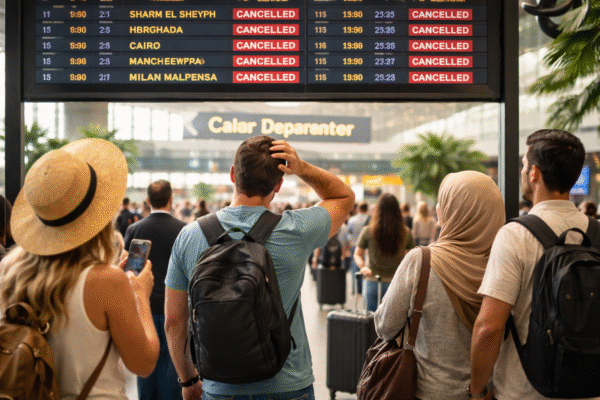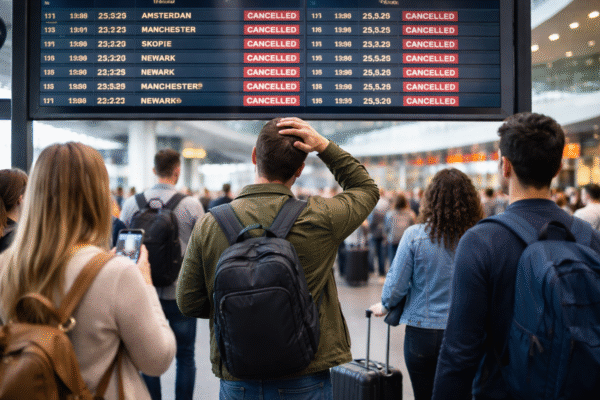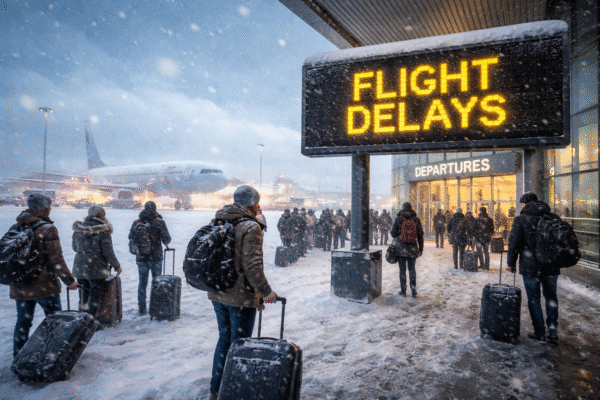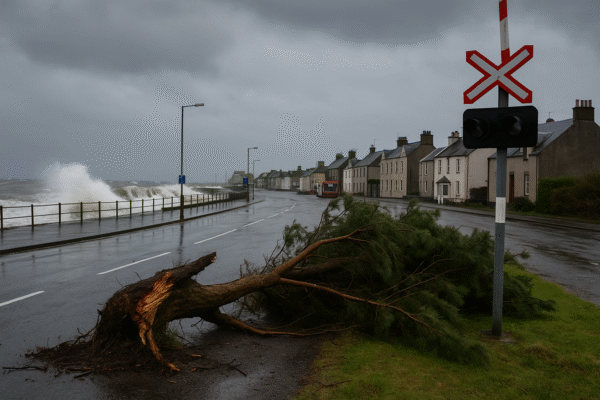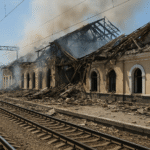Scotland is facing a severe blow to its tourism industry in the aftermath of Storm Amy, which has left tens of thousands without power and brought significant disruption to air, rail, and ferry travel. As one of Europe’s most visited destinations, Scotland relies heavily on its transport infrastructure to welcome international visitors and domestic travelers alike. With ferries canceled, flights delayed, and major rail lines shut down, the storm has created turmoil not just for residents, but also for thousands of tourists.
The storm, which struck late Friday with powerful winds and torrential rainfall, has forced many regions into an emergency response. While the weather system has since begun to move away, the recovery process remains slow, leaving communities and travelers cut off from essential services.
Power Outages Leave Communities in Darkness
At the peak of the storm, nearly 34,000 households across Scotland were left without power, according to energy providers. Although restoration teams have managed to reconnect tens of thousands of homes, thousands remain cut off. Engineers continue working around the clock, battling fallen trees, broken power lines, and blocked access routes.
For many visitors in remote highland areas and island destinations, the blackout has created additional challenges. Hotels, guesthouses, and self-catering accommodations have reported difficulties in maintaining heating, lighting, and basic services for stranded guests. The tourism industry, already under seasonal pressure, is now grappling with canceled bookings and frustrated travelers.
Dangerous Winds and Ongoing Weather Alerts
The Met Office has issued continued weather warnings for eastern and northern Scotland, including Orkney and Shetland, as gusts of up to 70 mph are still forecast. Some areas recorded wind speeds of almost 100 mph during the height of Storm Amy. Combined with rainfall exceeding 80mm in parts of the Highlands, this extreme weather has caused flooding, landslides, and widespread transport disruptions.
For travelers, this has meant a halt to scenic routes, ferry crossings, and even access to iconic landmarks. Popular tourist hotspots in rural regions remain inaccessible, with local authorities urging visitors to postpone non-essential travel until conditions improve.
Severe Transport Disruptions
Scotland’s transport system has been hit particularly hard, with canceled ferries, delayed flights, and damaged rail networks.
- Ferry Services: Many sailings to the islands were suspended, leaving visitors stranded or forced to change their plans.
- Flights: Airports across Scotland reported long delays, with several flights rerouted due to strong winds.
- Rail: Rail services remain among the hardest hit. ScotRail has confirmed significant damage to multiple lines, including the scenic West Highland Line between Fort William and Mallaig, a favorite for tourists. Repairs are ongoing, but some routes may remain closed for days.
Visitors planning to travel between Glasgow, Inverness, and the northern isles have been urged to check updates regularly. Authorities have recommended allowing extra time for journeys, as repairs and safety inspections continue.
Emergency Response and Community Resilience
Emergency services have been stretched thin, responding to incidents ranging from fallen trees and traffic accidents to flooded homes. Rural communities, which often face slower recovery times, have shown resilience by coming together to support both residents and stranded tourists.
Local councils have worked with charities to provide temporary shelter, hot meals, and medical supplies. For visitors caught in isolated areas, local businesses have stepped in to offer assistance, reinforcing Scotland’s tradition of hospitality even in times of crisis.
Impact on Tourism and the Economy
Scotland’s tourism industry, valued at billions annually, faces a significant short-term setback. Autumn and early winter normally bring visitors drawn to Scotland’s landscapes, cultural festivals, and historic attractions. However, Storm Amy’s timing has disrupted this flow, with many hotels reporting cancellations and transport operators struggling to maintain schedules.
Tourism boards are urging patience, emphasizing that many regions remain open and safe to visit. Popular cities such as Edinburgh and Glasgow have resumed most services, although travelers are being advised to plan carefully, stay updated on travel conditions, and allow flexibility in itineraries.
Looking Ahead: Recovery and Travel Advice
Recovery efforts are expected to last several weeks, especially in remote and island regions where transport and electricity networks suffered heavy damage. Authorities have urged both residents and visitors to prioritize safety, follow official updates, and prepare for further potential weather disruptions.
For travelers planning upcoming visits:
- Check transport updates daily before departure.
- Book flexible accommodation and travel options where possible.
- Avoid high-risk areas still under weather alerts.
- Support local businesses in affected communities, many of which are working hard to recover.
Despite the current challenges, Scotland’s tourism sector remains committed to bouncing back. The resilience of local communities, combined with rapid recovery measures, will play a central role in restoring the country’s appeal for travelers.
Conclusion
The aftermath of Storm Amy has tested Scotland’s infrastructure, its tourism industry, and the resilience of its people. With widespread power outages, dangerous winds, and transport chaos, the storm has left a significant mark. Yet, as recovery efforts continue, Scotland’s communities and tourism sector are determined to welcome visitors back safely.
For travelers, the key in the coming weeks will be flexibility, awareness, and patience. Scotland’s natural beauty and cultural richness remain unchanged, and once the storm’s scars heal, the nation is expected to regain its rhythm as one of Europe’s most captivating destinations.
For more travel news like this, keep reading Global Travel Wire





